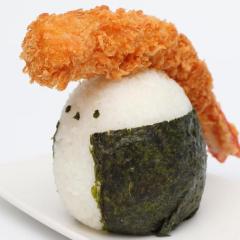Search the Community
Showing results for tags 'Asian'.
-
HI, I just spent waay too much time reading a couple of the knife related threads on here. A couple of knives that were mentioned there, but not really discussed - the Furi east/West model (a roughly santoku style - did I get that right?), and the Kasumi line, particularly their Chef's knives are of interest to me. Does anyone have any experience/ opinions about these knives? I have one potential concern about the Kasumi - from the pictures on the web, it looks like it lacks the thick spine of a heavy-duty German model. while this may make sharpening easier, will the Kasumi be able to stand up to chopping through chicken bones and the like as well as knives having a thick spine. Thanks, Geoff Ruby
-
I've bought from Bernal Cutlery in SF and Japanese Knife Imports in Beverly Hills. Both are great but I am looking for something new. I like hand forged, high quality knives. My most recent was a Fujiwara 210 white #1 which has changed my kitchen forever - such an amazing knife. But I'm on the hunt again...suggestions?
-
Hi although my english is not very well, i try to open this forum to give me a knowledge about pastry worlds. Recently i read in some web sites, that japanese pastry and cakes including boulangerie are far better than french in taste and shape, is that true because i never taste french pastry in France (off course !!). what i really want to know is , is that true that french pastry is not in progress, i meant is not having any innovations or somethings, but things that bother me is some said that japanese student is choose france to taske pastry course. isn't that confusing, so does it mean that the people that makes the different not the technics..is it ??
-
I am not being at all disrespectful wnen I ask this question. As diabetic myself, I often wonder what people raised in intensely rice or carbohydrate based food cultures [such as my own Indian Bengali one] do to adapt to a low-carbohydrate regime? [Although, one must say that 21st century Japan with its 'prosperity' and range of foods available to buyers is very different from the Japan of the 1950s; still, the rural areas must be a bit cautious about pesto and such 'foreign' foods, would they not?] Japanese short grain rices, mochi, udon, flour based noodles of most types etc. [but probably not buckwheat flour or shirataki] definitely have a prohibitive glycemic index. These being the heart of say, a middle-class, or affordable diet, with what foods would a diabetic manage to celebrate the changing seasons? In the US, it seems that certain types of proteins (both animal and vegetable), fruits and vegetables are considerably cheaper than similar types of things in Japan that might be suitable for diabetics. I may be horriibly wrong (I hope so). Also, one nowadays is told to avoid consuming too great a quantity of soy protein or products. So what are the alternatives? Thanks for understanding. gautam
-
I made gyoza last night and it has been years since I made them. I always thought it was too time consuming and would occasionally by them already prepared but my kids never cared for them, so I rarely served them. Well I have discovered that letting my kids help me means that it takes almost no time at all and I just can't get over how different they taste! I think I will never buy them again..... I just made the simple typical filling of pork and Chinese cabbage and it was good but could have been so much better. Anyone have some favorite gyoza fillings they want to share? My gyoza EDIT and by the way my kids loved them!!
-
I love mochi but I am very picky about the kind of mochi I eat. My favorite type is actually savory, not sweet... the kind that is grilled/baked, wrapped in seaweed and dipped in a soy/sugar sauce. Any one else care to share their favorites? In Japan I've had mochi with black sesame in it. It wasn't the filling, the whole large chunk was sesame. It dried out a quicker than the regular stuff. The texture was very different. One thing I don't like about mochi is that it spoils, or should I specify, it MOLDS rather quickly.
-
Inspired by the Pizza Hut thread... When I was working at a Japanese restaurant in the U.S., we were told to describe okonomiyaki to American customers as Japanese pizza. What are your favorite toppings? Do you prefer Hiroshima style, with lots of cabbage between thin layers of batter? Or Osaka style, with all the ingredients mixed together and cooked like a pancake? Modan-yaki, topped with yakisoba? More unusual varieties you've seen? Okonomi is usually a clean-out-the-fridge type dish for us. I like mine with mochi. Kimchi is good in it too. The most unusual okonomi I ever had was at a tiny restaurant in Asakusa. Anko (sweet red bean paste) brought to the table after the meal with its own small bowl of batter, dessert okonomiyaki. I was the only one who enjoyed it I think.
-
Hi! As many of you are probably aware by the number of forums crammed with razor-sharp-knife-addicts, japanese knives are quite trendy among chefs... from the 3-star chef to the not-so-money-conscious home cook (precisely the kind of cook that will afford MC^^). The point of my post is not to start a philosophical debate on whether or not there are good european- or american-style knives, nor to say all knives with a "japan style" label are excellent. Yet I must confess that from the day I cut my first veggie with a quality japanese knife, it changed both my food prep experience AND my appreciation of the final product. What I would be very interested in is knowing from MC's arsenal of analysis techniques how big a difference a knife can make: - on the effort required to cut - on the surface of the cut - on the qualities of the end-product (water loss, visual aspect, taste, ...) - ... For instance, the hardest japanese knives are non-stainless, and they easily impart an iron oxide taste to the food, especially when acidic, when they are not carefully wiped every 20 seconds. So in my opinion the advantage -other than sheer cutting power- of an aoko honyaki usuba over a ginsako or swedish stainless usuba is debatable... Any thoughts ? Nick.
-
Hi, I live in Japan and would like to purchase high quality knives, specifically boning, vegetable, and paring knives. I went to kappabashi a few years ago and was sold shoddy knives at an inflated price. I'm back in the market and would prefer customer recommendations instead of some shop staff with stock to peddle. Cheers,
-
I've been thinking about possibly making a couple of new knife purchases. My friend Sean has acquired a diverse collection of kitchen knives over the course of a multi-year obsession. So we thought we'd take the opportunity this weekend to go through all his knives and make some comparisons. Here's the knife collection: To break it down into two groups, going from left to right: 1. First two Chinese cleavers. Sean's friend brought these back for him from China so there aren't a lot of details available about them. This one is for vegetables. 2. And this is a Chinese cleaver for bone breaking and other heavy lifting. 3. The Ryusen Blazen gyuto in the 270mm size, from Epicurean Edge 4. Global 10.5" chef's knife 5. Henckels 4-star 10" chef's knife 6. Kumagoro hammered-finish gyuto, 240mm 7. Shun classic 8" chef's knife (Granton edge) 8. Henckels Professional S 8" chef's knife 9. Kasumi 180mm santoku 10. Takeda 180mm -- this is either a gyuto or a banno funayuki-bocho, we're not 100% sure and the shapes are quite similar 11. Wusthof Classic 9" slicer 12. Mac SB105 10.5" bread knife 13. Kikuichi Carbon Elite 240mm sujihiki 14. Henckels 4-star 8" bread knife 15. Another Henckels knife. As you might have deduced, Sean started his knife odyssey with a set of Henckels knives and has slowly retired them. 16. Tojiro DP honesuki 150mm 17&18. More Global knives 19. Shun paring knife (3.5") 20-23. Assorted paring and utility knives 24. A Japanese nikiri of unknown provenance, purchased in Asia 25-27. Henckels four-star santoku, utility and cleaver (up top) Last night we performed some preliminary analysis and decided that there was no way to test every knife systematically without devoting an unreasonable amount of time to the project (and wasting a lot of produce). So using various criteria we narrowed the field to six general-purpose knives (well, five and we also threw in the nikiri for fun). So that's knives 3 (RyuSen Blazen, $319.95 at Epicurean Edge), 4 (Global, $136 at EE), 6 (Kumagoro, $157.95 at EE), 7 (Shun, $128.95 at EE), 10 (Takeda, somewhere in the neighborhood of $210) and 24 (unknown Japanese nikiri, cheap). This morning, our cooking project was making hash out of leftover prime rib plus potatoes, onions, garlic and parsley. These ingredients presented a good range of slicing and dicing opportunities, which actually turned out to be important in evaluating the knives. In order to eliminate as many variables as possible, each knife (except the Blazen, which was already quite sharp, though later we sharpened it anyway) was freshly sharpened to Sean's best approximation of factory angles with the Edge Pro . . . . . . and stropped with this thing: Of course sharpening them all to identical angles may have been another way to go. Knife comparisons are fraught with this sort of uncertainty. For example, Cook's Illustrated I believe tests knives new out of the factory box. That makes sense for people who don't sharpen knives, but it also gives an inflated rating to a knife like a Forschner that comes extremely sharp from the factory but is only going to stay that way for a short while. We started with about half a 20-pound sack of potatoes. (We didn't use them all in the hash!) We very quickly gave up on the Global knife and the Japanese nikiri. They simply weren't in the same league as the rest of the knives. We used them a little more later on but it was immediately clear that they couldn't compete. I had high hopes for the Kumagoro hammered-finish gyuto. And maybe if the task at hand had been making thin slices of meat, fish or tomatoes I'd have had a higher opinion of this knife. But for our tasks it was just awkward. It's a relatively thin knife and quite large, and the handle is offset more than I like. It's clearly a great blade but as a kitchen knife it didn't work for me. I was initially disappointed with the Takeda gyotu. It wasn't long enough to do a good job cutting the potatoes lengthwise, especially with a pinch grip subtracting an inch or so from the usable portion of the blade. And I found the blade shape awkward for that task. Both the Shun and the Blazen absolutely excelled at cutting potatoes. The extra weight of their blades really helped make chopping potatoes easy. And I liked the Shun D-shaped handle and the Blazen's typical Western handle better than the Japanese octagonal handles (though this matters less if you use a pinch grip). When it came time to dice an onion, however, the Takeda made a huge comeback. It was by far the best knife for this task. Its thin, small blade made it very easy to cut thin slices in each direction. The other knives were all good at the onion task, and the Shun was better than any other knife in the running (I tried a whole bunch of them) but the Takeda was in its own league. I had not anticipated that there would be such a difference in usability from task to task. I guess I should have known that was going to happen, but I didn't. For the remaining tasks -- mincing garlic, slicing and dicing the cold leftover beef and chopping parsley -- the larger, heavy knives (the Shun and the Blazen being the only ones surviving until this point in the experiment) were best. The Shun was surprisingly competitive with the Blazen, given that the Blazen is a much more expensive knife and that most every knife aficionado will tell you the Blazen is a better knife. I was nonetheless very pleased with the Shun in most every way. The hash came out really well, by the way. As a side note, using the Henckels knives side-by-side with these better knives is very revealing. The Henckels knives are just not playing on the same field. The only advantage I can think of in favor of a Henckels knife is that you can beat on it more freely than you can a harder (and therefore more brittle) Japanese knife. Still, the Shun and Blazen were plenty beefy, it seemed, for long hours of heavy chopping. I didn't have my Wusthof chef's knife with me for this but I think the Wusthofs are better than the Henckels knives -- but still not on par with something like the Shun. On the one hand, I felt I learned a lot from the experiment. On the other hand, it didn't give me the one-knife answer I was looking for. If I had to choose one all-around knife, taking cost into account, I'd choose the Shun. But I'd rather also have the Blazen and the Takeda. And if I had both of those I might not need the Shun as much. But it would be a much more expensive proposition. I think I see a Shun in my future.
-
Hello all, In that I am looking to purchase a few kitchen knives, and in that Japanese knives are more recognized, can someone point me in the right direction as to how to obtain a crash course knowledge of these knives? I've seen a lot of Japanese terms, styles and models mentioned, but it's very difficult to distinguish amoung these terms to know which is which. And then there's the different methods and manufacturing processes to consider. Help! Where can I find information that is succint, to the point and won't take reading a 500 disseration just to get an idea what's going on in this field? (Internet resources area the welcomed priority, and then books.) Thanks, Starkman
-
Has anyone come across any Japanese knives constructed out of ZDP189? How and where might I find one? I've tried trolling the net without much success.
-
I've been wasting a fair amount of my employer's time leering at Japanese knife porn these last few days, and am curious about the rationale behind 150mm paring knives. I think the western 75mm to 150mm standard works just fine. I can only see the extra inches getting in the way for the things I do with a small knife. Am I missing something?
-
What types of seaweeds do you have in your house and what are some of your favorite applications?
-
I remember reading something about health concerns related to eating hairy moss seaweed. I can't remember any of the details. Does anyone know what I'm talking about? I understand that there are artificial and authentic varieties of hairy moss seaweed. Does this concern apply specifically to one or other? And, while I have your attention, what is artificial seaweed? Thank you
-
Anyone have any good recipes for hai dai (aka kombu)? I love the stuff, and I particularly love it in home-style soups, like with pork spare-ribs. However, as those who have made Japanese dashi will attest, if you let kombu boil, it turns the broth slimey. Do people soak the seaweed beforehand? Do you add it at the very end of cooking? Or do you just keep the soup at low simmer the whole time? Thanks, -al
-
I've had a particularly interesting maki roll at Mizu Sushi, NYC that is called a spicy scallop roll. It contains raw scallop, tempura crumbs, spicy sauce and is rolled in a wonderful soft seaweed wrapper much lighter in color than regular nori and more pliable. It seems to almost be translucent. It definitely is trans-lucious. Anyone know about this?








